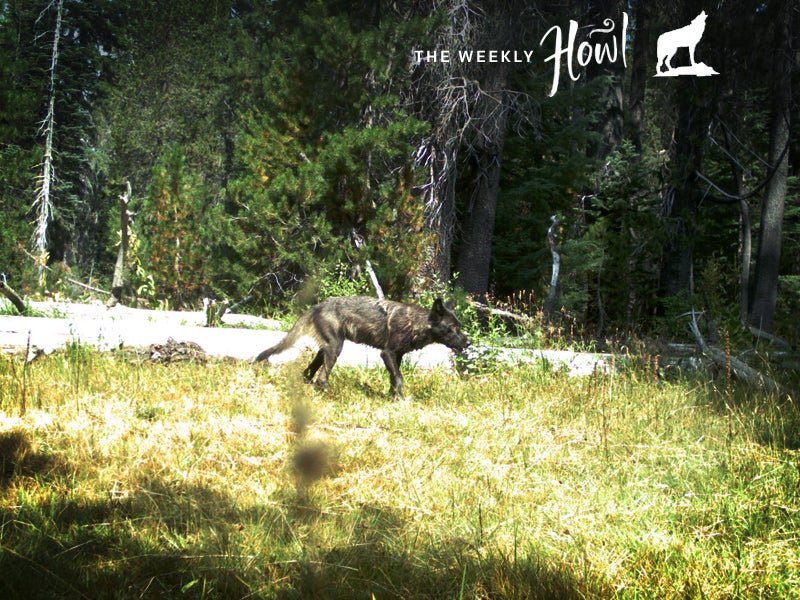Pack of Pups Signals Wolves May Be in California to Stay
A group of five gray wolf pups and several adults has been spotted in California—the first time in almost 100 years that wolf pups have been seen in the state.

This page was published 10 years ago. Find the latest on Earthjustice’s work.
Gray wolf pups—a bonafide rarity in California—have been spotted after nearly a century-long absence. The five pups, along with a pack of adult wolves, nicknamed the Shasta Pack, were found in Siskiyou County in the northernmost part of California. Wildlife officials have photographed the animals with remote trail cameras and are considering placing a radio collar on at least one individual from the pack to track its movements. The young wolves in particular hold special significance since they are the first pups documented in the state since the 1920s.
The majestic Canis lupus, or gray wolf, once roamed the far-flung lands west of the Sierra Nevada. The gray wolf was revered by Native American tribes in California as a sacred being and has been honored in Native American ceremonial garb, artwork and creation stories.
This revered status was not to last. With European expansion into California, the landscape as well as the fate of the gray wolf was changed forever. Rather than co-exist, we pushed wolves to the brink of extinction as the state’s vast wilderness was transformed into towns and cities. By the height of the Jazz Age, Canis lupus had been eradicated from the state of California—seemingly for good.
That is, until 2011 when a lone male, known as OR7, wandered into the state. Though the wolf has since left California and joined a pack in southern Oregon, it was a sign that wolves might once again roam the state.
Now, with the arrival of the five wolf pups and their pack, the prospect of wolves becoming reestablished is stronger than ever. Wolves’ endangered status was affirmed by the California government in June 2014, as was their protection under the federal Endangered Species Act. These protections make it illegal to harass, harm or kill the animals.
Though there have been some fears about the interactions the Shasta Pack will have with local livestock, most citizens seem to have a positive outlook on the new wolves. Karen Kovacs, a California wildlife program manager, told KQED that she had “spoken with the majority of the private landowners within a 10-mile radius…and they are all very cooperative.”
California is currently working on a management plan for how to integrate wolves back into the state. Officials plan to release a draft of the plan by the end of 2015. Ultimately, the arrival of these animals signals a win for wolves and their supporters in California. “This is one of those rare moments when those of us who are longtime wolf advocates get to howl in celebration,” Amaroq Weiss of the Center for Biological Diversity told KQED.
Once a species decimated by the arrival of humans, wolves are making a strong and enduring comeback. By doing so, they are not only helping to ensure the survival of their species, but also creating diversity in the California ecosystem, and that’s something to howl about.
About this series
2015 marks the 20th anniversary of the reintroduction of gray wolves to the northern Rockies, and since that time wolves have been under nearly constant threat of losing their protections. The Weekly Howl provides insights and education about the gray wolf and updates on the status of its protections while celebrating the iconic species as a vital part of a functioning, healthy ecosystem. Posts will appear every Wednesday starting June 17 and running through the summer.
Don’t miss last week’s post: Wolfdog Rescue Brings a Misunderstood Breed Out of the Shadows.